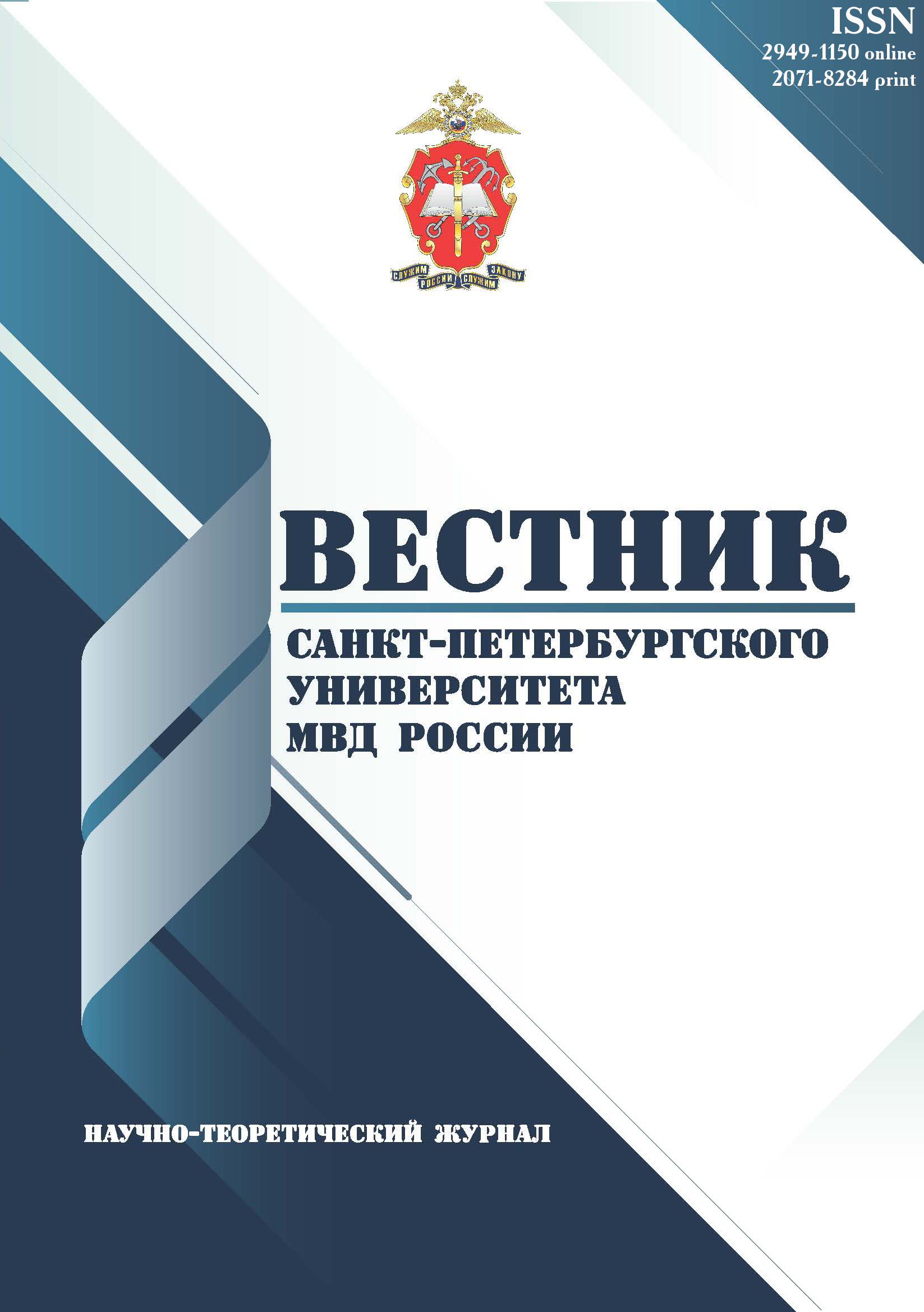from 01.01.2016 until now
Volgograd, Volgograd, Russian Federation
Volgograd, Volgograd, Russian Federation
UDC 343.98
Introduction. The article is devoted to the issue of introducing into criminal justice system the procedure of labelling physical evidence with dynamic QR codes generated in the conditions of seizure of trace information after filling in a digital individual map for each object. Working with the encoded information is suggested to be carried out with appliance of the programme ‘Verification of technical authenticity of physical evidence’ providing access of the user authorised on a permanent or temporary basis to the primary and supplemented information on the labelled physical evidence, formed in handling the object equipped with a QR code. These data include factographic data on territorial-temporal parameters and conditions of seizure of objects, their localisation, information on the persons involved in processing physical evidence, technical and forensic means and methods applied in the process of detection, fixation, seizure, preliminary and expert investigation, accounting and registration activities. The authors emphasise the necessity of creation of systems of automatic identification of physical evidence with appliance of QR codes making it possible to trace the whole life cycle of objects. It is noted that the development and introduction of advanced software into practice can contribute to the creation of a modern system of traceability of handling a labelled object, aimed at preventing illegal activities related to intellectual or material forgery of physical evidence. Methods. The universal dialectical method of scientific research, as well as a set of various methods of general scientific and cognitive orientation, including logical, comparative-legal and other private methods of research are used as a methodological basis of the study. Results. The authors have substantiated the reasonability of introducing into the activity of law enforcement bodies the procedure of labelling each physical evidence, attached to the materials of a criminal case by using dynamic QR codes. This means provides technical reliability of each object, attached to the materials of a criminal case due to full traceability of all manipulations, carried out in processing it when investigating crimes.
labelling, object identification, QR code, technical reliability, physical evidence
1. Mamedov R. Ya. Suschnost', ponyatie, soderzhanie veschestvennyh dokazatel'stv // Vestnik Krasnodarskogo universiteta MVD Rossii. – 2012. – № 2 (16). – S. 72–77.
2. Dronova O. B., Kotel'nikov B. V. Mesto proisshestviya kak ob'ekt ekspertnogo issledovaniya // Yurist'-Pravoved'. – 2021. – № 2 (97). – S. 115–120.
3. Sinkevich V. V. Cifrovizaciya ugolovnogo processa: zarubezhnyy i otechestvennyy opyt // Vestnik Volgogradskoy akademii MVD Rossii. – 2022. – № 1 (60). – S. 129–134; https://doi.org/10.25724/VAMVD.ZEFG.
4. Svistil'nikov A. B., Kuleshov V. I. Nekotorye voprosy informacionnogo obespecheniya operativnyh podrazdeleniy ugolovnogo rozyska // Vestnik Belgorodskogo yuridicheskogo instituta MVD Rossii. – 2010. – № 2. – S. 71–76.
5. Fink E. A. K voprosu o strukture informacionnoy sfery obschestva // Omskiy nauchnyy vestnik. – 2010. – № 6 (92). – S. 85–87.
6. Bol'shakov A. P., Pupceva A. V. Vidy informacionnogo obespecheniya, ispol'zuemogo v rozyske lic (podozrevaemyh, obvinyaemyh), skryvshihsya ot organov predvaritel'nogo sledstviya i suda / Aktual'nye problemy predvaritel'nogo rassledovaniya : sbornik nauchnyh statey mezhdunarodnoy nauchno-prakticheskoy konferencii, 28–29 noyabrya 2013 g. – Volgograd: Volgogradskaya akademiya MVD Rossii. – 2013. – S. 295–302.
7. Pshenichnyy R. V. Kriminalisticheskie uchety i ih primenenie pri rassledovanii i raskrytii prestupleniy // Severo-Kavkazskiy yuridicheskiy vestnik. – 2019. – № 1. – S. 156–163; https://doi.org/10.22394/2074-7306-2019-1-1-156-163.
8. Pautova T. A. Osobennosti ispol'zovaniya sledovatelem veschestvennyh dokazatel'stv pri provedenii doprosa // Koncept : elektronnyy zhurnal. – 2015. – T. 13. – S. 1506–1510. – URL: http://e-koncept.ru/2015/85302.htm.
9. Sevost'yanova S. O. Obespechenie informacionnoy proslezhivaemosti raboty s veschestvennym dokazatel'stvom kak sredstvo protivodeystviya prestupleniyam, sovershennym licami, privlekavshimisya v kachestve sudebnyh ekspertov // Yurist'-Pravoved'. – 2024. – № 2 (109). – S. 185–190.
10. Sidorova E. I., Morugina N. A. Ispol'zovanie, vydacha i hranenie veschestvennyh dokazatel'stv po ugolovnomu delu // Vestnik Voronezhskogo instituta MVD Rossii. – 2021. – № 2. – S. 311–316.
11. Popov S. V. Upravlenie ekspertno-kriminalisticheskimi podrazdeleniyami organov vnutrennih del Rossii na osnove razvitiya sovremennyh informacionno-kommunikacionnyh tehnologiy // Molodoy uchenyy. – 2019. – № 25 (263). – S. 336–338.
12. Muratov K. D. Sudebnye veschestvennye dokazatel'stva po ugolovnym delam: sovremennye problemy : monografiya / pod red. O. A. Zayceva. – Moskva: Yurlitinform, 2021. – 144 s.
13. Dronova O. B. Sovremennye vozmozhnosti povysheniya effektivnosti protivodeystviya oborotu fal'sificirovannoy potrebitel'skoy produkcii // Yuridicheskaya nauka i pravoohranitel'naya praktika. – 2014. – № 4 (30). – S. 134–139.
14. Hristenko A. A. Teoretiko-pravovoy aspekt informacionnoy bezopasnosti operativno-rozysknoy deyatel'nosti podrazdeleniy ugolovnogo rozyska // Evraziyskiy yuridicheskiy zhurnal. – 2016. – № 7 (98). – S. 246–249.
15. Muratova N. G. Cifrovye uchety monitoringovyh svedeniy po ugolovnym delam, ili o Koncepcii edinogo cifrovogo ugolovnogo dela (v prodolzhenie diskussii) // Vestnik Volgogradskoy akademii MVD Rossii. – 2024. – № 1 (68). – S. 88–96; https://doi.org/10.25724/VAMVD.A219.














